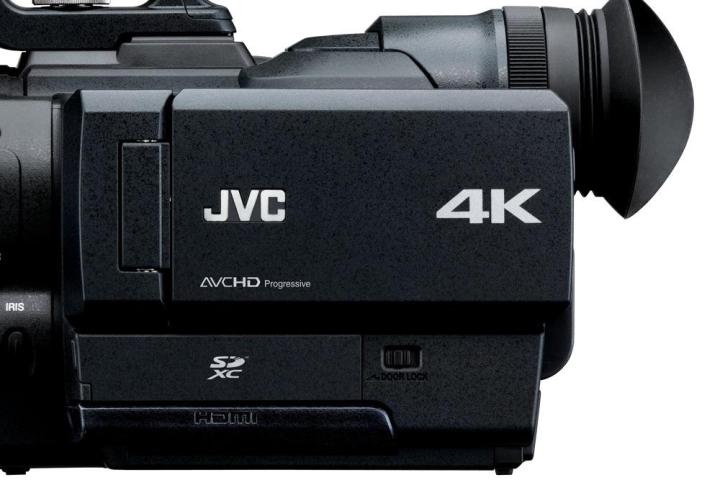
After recently joining the open Micro Four Thirds standard, JVC Kenwood has shown off two prototype 4K Ultra HD camcorders at NAB in Las Vegas. Both come with a Micro Four Thirds mount, meaning that all lenses from Olympus, Panasonic, Sigma, Voigtländer, and others made for the system can be used on these camcorders. But this isn’t really the interesting part, as JVC is neither the first to create a dedicated Micro Four Thirds video camera, nor the first to create a 4K-capable camera with Micro Four Thirds mount.
What’s really interesting is that JVC has decided to put an oversized Super 35mm sensor behind that Micro Four Thirds mount. The Super 35mm format comes from the days of film, and is slightly larger than the sensor in regular Micro Four Thirds cameras. In fact, this reminds us a bit of Sony cramming a full-frame 35mm sensor behind its E-mount, which was originally created for the smaller APS-C-sized sensor.
There is little information available on the two devices as of right now, but here’s what we know so far. The larger of the two is a shoulder-mounted camcorder called the GY-LSX2, and is capable of recording 4K Ultra HD at both the cinematic framerate of 24p, and the more common video framerate of 30p. It is also said to be able to output HD and standard definition video at the same time, and uses SDHC and SDXC as recording media. The smaller device, the GW-SPLS1, actually comes in two pieces: a mount-plus-sensor unit that can be attached to a gimbal, and an external monitor-plus-recorder unit. It uses the same Super 35mm sensor as the GY-LSX2.
Now the question is whether the Micro Four Thirds system lenses will be usable on these devices at all, considering they were designed for a smaller sensor area. The answer is a definitive yes and no. The thing is, each lens has a specific imaging circle, that varies in size from lens to lens and depends on many factors including the lens’ focal length. As a general rule, lenses with a longer focal length (e.g., telephoto lenses) can cover a larger sensor area than lenses with a shorter focal length (e.g., wide-angle lenses.) So in the end, it really depends on the lens.
Does this mean that we will see Micro Four Thirds still cameras with larger sensors in the future? Probably not. For one, this would require new lenses to be developed, just like Sony’s full-frame E-mount cameras need a new set of lenses that cover their full sensor area. This doesn’t make a lot of sense for Micro Four Thirds, which already has a vast lens selection. Also, the Micro Four Thirds system already has a very good balance of size and quality, and the size part would definitely be compromised by using a larger sensor.
For cinematography, however, using the larger Super 35mm format actually makes a lot of sense, because it’s already an established standard in the movie world. Cinematographers are used to thinking in terms of the Super 35mm format when looking at lenses, not in terms of the Micro Four Thirds format. So the larger sensor makes it easier for them to determine the angle-of-view a lens will yield when used on JVC’s new camcorders. In addition to that, the choice of the Micro Four Thirds mount makes it possible to adapt many different lenses from various systems, and even full-fledged cine lenses that were designed for the Super 35mm format in the first place. And that makes JVC’s camcorders very flexible in theory.
Check out photos of the prototype camcorders, as well as one for an aerial drone, at DVInfo.
(Via NoFilmSchool)


